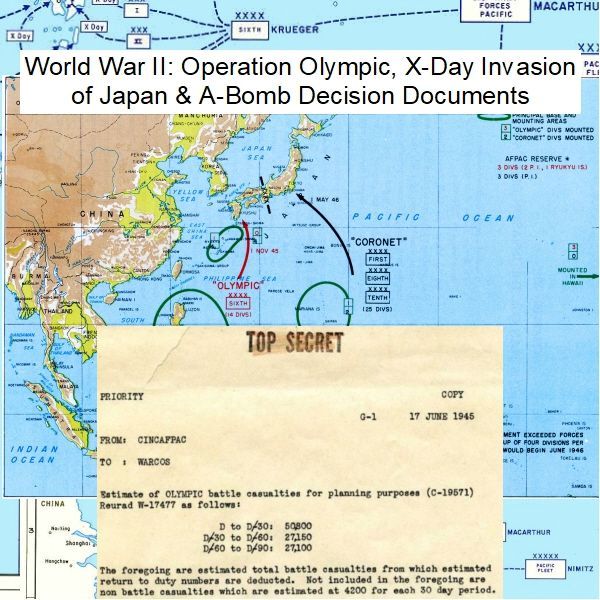
Description
Atomic Bombs, Invasion Plans, and Japan’s Surrender
August 2, 1939:
- Leó Szilárd, in consultation with Edward Teller and Eugene Wigner, writes the “Einstein–Szilárd letter.”
- Albert Einstein signs the “Einstein–Szilárd letter,” which is then sent to President Franklin D. Roosevelt, warning of Germany’s potential to develop atomic bombs and suggesting the United States initiate its own nuclear program.
August 1939:
- Albert Einstein sends a letter to President Franklin Roosevelt, independently warning of Nazi Germany’s potential to build a powerful and destructive new weapon.
(Undated, prior to June 1945):
- The Joint Logistics Committee circulates a report by the Joint Logistics Plans Committee on the “Logistical Plan for Operations Against Kyushu (1944).” This plan undergoes modifications based on evolving concepts.
March 24, 1945:
- General Headquarters, U.S. Army Forces in the Pacific, issues the “Downfall” Strategic Plan, G-2 Estimate of the Enemy Situation, detailing the Japanese military situation for operations against Kyushu and Honshu.
May 20, 1945:
- General Headquarters, United States Army Forces in the Pacific, issues “DOWNFALL”, Strategic Plan for Operations in the Japanese Archipelago.
May 28, 1945:
- The “DOWNFALL” Strategic Plan for Operations in the Japanese Archipelago is formally circulated as a basis for directives to force Japan’s unconditional surrender through the seizure of vital objectives.
- A “Staff Study Olympic Operations in Southern Kyushu” is derived from the “DOWNFALL” Strategic Plan, outlining operations for U.S. Army and Navy Forces to occupy Southern Kyushu with an “X-Day” target date of November 1, 1945.
June 18, 1945 (Monday):
- A meeting is held at the White House, the minutes of which are later included in Harry S. Truman’s Presidential Papers concerning the Atomic Bomb Decision.
July 16, 1945:
- The first atomic bomb is successfully tested (referenced in cables to Potsdam).
August 1, 1945:
- Assistant Chief of Staff, G-2, Headquarters Sixth Army, issues a “G-2 Estimate of the Enemy Situation, Olympic Operation,” acknowledging Japan’s recognition that an Allied attack on the homeland (specifically Southern Kyushu) is imminent.
August 6, 1945:
- The first atomic bomb is dropped on Hiroshima.
August 8, 1945:
- The Soviet Union declares war on Japan.
- The Soviet Union launches a massive attack in Manchuria.
August 9, 1945:
- A second atomic bomb is dropped on Nagasaki.
August 12, 1945:
- “Administrative Order Number 1: Operation Olympic, to Accompany Field Order No. 1” is issued, covering logistics and supply responsibilities for IX Corps for Operation Olympic.
August 15, 1945:
- Japan surrenders, leading to the cancellation of Operation Downfall (including Operation Olympic and Operation Coronet).
November 1, 1945 (Planned):
- “X-Day” for Operation Olympic, the invasion of the southern third of Kyushu, was scheduled to begin. Okinawa was designated as the staging area.
December 3-5, 1945:
- Headquarters, IX Corps, conducts a terrain reconnaissance and survey of Japanese dispositions within the IX Corps zone for the planned Operation Olympic (Majestic) on Southern Kyushu.
December 12-15, 1945:
- Headquarters, IX Corps, issues the “Report of Reconnaissance, Southern Kyushu: IX Corps Zone of Operation, Olympic (Majestic) Operation,” detailing findings from the December 3-5 reconnaissance mission.
Early 1946 (Planned):
- Operation Coronet, the planned invasion of the Kantō Plain (near Tokyo) on Honshu, was scheduled to occur, utilizing airbases captured in Operation Olympic.
March 1946:
- Commander, Third Amphibious Force Chief of Naval Operations, Aerology Section, publishes “Weather and the Occupation of Northern Japan,” detailing weather considerations for Operation Olympic’s planning and the shift to occupation.
1945-1953:
- Harry S. Truman’s Presidential Papers concerning the Atomic Bomb Decision cover this period, including information on the Groves Project (Manhattan Project), White House meetings, and Truman’s reactions.
1961:
- Lt. Col. Henry G. Morgan, Jr., prepares “Planning the Defeat of Japan: A Study of Total War Strategy” for the Office of the Chief of Military History.
1995:
- The National Defense University, Institute for National Strategic Studies, publishes “Operation Downfall: The Devil Was in the Details,” an article about the invasion plan.
Cast of Characters
- Albert Einstein: A prominent physicist. In August 1939, he sent letters to President Franklin Roosevelt, including the one he signed written by Leó Szilárd, warning about Nazi Germany’s potential development of atomic bombs and advocating for the United States to initiate its own nuclear program.
- Franklin D. Roosevelt: President of the United States during the early stages of World War II. He received the warnings from Einstein and Szilárd that prompted action leading to the Manhattan Project.
- Leó Szilárd: A Hungarian physicist. He wrote the “Einstein–Szilárd letter” in August 1939, which was signed by Einstein and sent to President Roosevelt, urging the U.S. to pursue nuclear research.
- Edward Teller: A Hungarian physicist who consulted with Leó Szilárd on the “Einstein–Szilárd letter.”
- Eugene Wigner: A Hungarian physicist who consulted with Leó Szilárd on the “Einstein–Szilárd letter.”
- Alexander Sachs: An advisor to President Franklin Roosevelt. He was involved in correspondence related to the creation of the Manhattan Project.
- Vannevar Bush: Director of the Manhattan Project. He was involved in correspondence related to its creation.
- Harry S. Truman: President of the United States. His presidential papers cover the decision to use the atomic bomb, his reactions, and meetings related to the war in the Pacific and the Manhattan Project. He was sensitive to casualty estimates for an invasion of Japan.
- General Carl Spaatz: A U.S. Air Force general. He received instructions regarding the use of the atomic bomb against a Japanese target.
- Robert Oppenheimer: Chaired the Interim Committee, which conducted a study of the wartime use of the atomic bomb.
- General Douglas MacArthur: A principal U.S. military commander in the Pacific. He was involved in a rivalry with Admiral Chester Nimitz over command control regarding the invasion of Japan.
- Admiral Chester Nimitz: A principal U.S. naval commander in the Pacific. He was involved in a rivalry with General Douglas MacArthur over command control regarding the invasion of Japan.
- Lt. Col. Henry G. Morgan, Jr.: Authored “Planning the Defeat of Japan: A Study of Total War Strategy” in 1961 for the Office of the Chief of Military History.
WWII Plans to Invade Japan – X-Day & A-Bomb Files
Second World War: Materials Pertaining to Operation Olympic, the Planned Invasion of Japan, and the Choice to Employ Atomic Weapons
This collection comprises 1,589 sheets of records and academic research focusing on Operation Olympic, the proposed assault on Japan, and the ultimate determination to deploy the atomic bomb on the nation. Operation Olympic constituted one component of the broader Operation Downfall, alongside Operation Coronet. Operation Downfall represented the Allies’ suggested strategy for invading Japan’s main islands. The anticipated military action was called off after Japan capitulated in the wake of the atomic attacks on Hiroshima and Nagasaki, the Soviet Union’s declaration of hostilities against Japan, and its subsequent offensive into Manchuria. Slated for commencement in November 1945, Operation Olympic aimed to seize the southernmost third of Kyūshū, Japan’s primary southern island, utilizing the recently secured island of Okinawa as a forward base. Operation Coronet, scheduled for early 1946, involved the proposed assault on the Kantō Plain, situated close to Tokyo on Honshu, Japan’s principal island. Successful seizure of airfields on Kyūshū during Operation Olympic would provide land-based aerial assistance for Operation Coronet. Had Operation Downfall proceeded, it would have constituted the most extensive amphibious assault ever mounted. Extremely high numbers of casualties were anticipated, and there was a belief that deploying atomic weapons could potentially compel Japan to capitulate. Hiroshima was subjected to the initial atomic bomb attack on August 6, 1945. Two days later, on August 8, the Soviet Union formally announced its state of war with Japan and initiated a large-scale offensive in Manchuria. This Soviet military action generated significant diplomatic and political ramifications. A subsequent atomic bomb was deployed onto Nagasaki city on August 9. Japan officially capitulated on August 15, 1945.
Contained Materials Comprise:
Correspondence Between Einstein, Roosevelt, Sachs, and Bush
This section features exchanges of letters involving Albert Einstein, U.S. President Franklin Roosevelt, his counsel Alexander Sachs, and Vannevar Bush, who directed the Manhattan Project, all pertaining to the genesis of the Manhattan Project. During August 1939, Albert Einstein dispatched a communication to President Franklin Roosevelt, cautioning about the potential for Nazi Germany to develop an unprecedented weapon, far surpassing any previously known in potency and destructiveness. Among these is the ‘Einstein–Szilárd letter,’ a missive composed by Leó Szilárd, bearing Albert Einstein’s signature, and conveyed to President Franklin D. Roosevelt of the United States on August 2, 1939. Drafted by Szilárd after consulting with his Hungarian physicist colleagues Edward Teller and Eugene Wigner, the letter cautioned about Germany’s potential to construct atomic bombs and advocated for the United States to initiate its own nuclear development. This communication spurred Roosevelt to action, ultimately leading to the Manhattan Project’s creation of the inaugural atomic bombs.
Military Espionage Records
This segment comprises 118 chosen pages from American military archives, detailing the concluding period of hostilities with Japan. These records encompass the United States’ strategic planning for an invasion of Japan and the resolution concerning the atomic bomb.Records highlight the contention between MacArthur and Nimitz regarding tactical authority, alongside the military strategists’ apprehension about discussing projected casualties, approximately 250,000, with President Truman.
The collection encompasses details on Japan’s likely response to an incursion into southern Kyushu, specifics of the proposed military operation against Japan (designated Operation Olympic), dispatches sent to Potsdam concerning the atom bomb trial on July 16, and directives issued to General Carl Spaatz concerning the deployment of the atomic weapon against a Japanese objective. This material is drawn from the Harry S. Truman Presidential Papers, specifically relating to the Atomic Bomb Decision.
The collection comprises 600 pages of records spanning from 1945 through 1953. These papers cover topics such as the Groves Project, also known as the Manhattan Project; the official notes from the White House conference on Monday, June 18, 1945; an assessment of the Pacific War situation against Japan; a report on strategic bombing; an examination of the wartime application of the atomic bomb by the Interim Committee led by Robert Oppenheimer; excerpts from Truman’s personal journal; and Truman’s reflections on the historical reception of his choice to deploy the bomb. This also includes the Logistical Plan for Operations Against Kyushu, dated 1944.
Authored by the Joint Logistics Committee. Summary: The accompanying document, generated by the Joint Logistics Plans Committee, is being distributed for the Joint Logistics Committee’s review. Subsequent to the release of J.W.P.C. 235/3, various conceptual adjustments have been incorporated into the present plan. Given the distinct foundational premises of these two strategies, the Joint War Plans Committee and the Joint Logistics Plans Committee have reached an informal understanding to evaluate and merge both documents. This section further details a logistical strategy for backing operations targeting Kyushu, listing its contents: an enclosed report, an appendix detailing the logistical plan for Kyushu support, Annex “A” (an orientation map), Annex “B” (a tactical map), Annex “C” (a general terrain and transportation map), Annex “D” (units and personnel information), and Annex “E” (construction needs, with Sub-tab “A” summarizing personnel, equipment, and material for construction, and Sub-tab “B” itemizing required construction projects). Also included is the “Downfall” Strategic Plan, specifically the G-2 Estimate of the Enemy Situation from March 24, 1945.
This comprises the G-2 assessment of the Japanese state concerning military actions against Kyushu and Honshu, prepared by the General Headquarters, U.S. Army Forces in the Pacific. Its components feature an overview of adversary situation developments, their organizational hierarchy, land forces, air assets, naval contingents, commercial shipping status, topographical details (for Kyushu and the Tokyo Plain on Honshu), and accompanying materials. Following this is the “DOWNFALL” Strategic Plan for Operations within the Japanese Archipelago, dated May 28, 1945.
Summary: 1. This accompanying Strategic blueprint serves as the foundation for orders directing military actions aimed at compelling Japan’s unconditional capitulation through the capture of key targets across the Japanese island chain. 2. Until specific directives are formalized leveraging this blueprint, it is being distributed to high-ranking Commanders and Staff Divisions within the United States Army Forces in the Pacific, as well as to the Commander-in-Chief, United States Pacific Fleet. Its purpose is to act as a broad framework outlining major aspects of resource distribution and inter-service coordination, thereby aiding both tactical and logistical readiness and execution. 3.This blueprint is being sent to the Commanding General of the Twentieth Air Force for his awareness and direction. 4. Relevant Headquarters will issue specific instructions and detailed analyses concerning the various upcoming operations at suitable junctures. A staff evaluation examining Olympic Operations in Southern Kyushu (May 28, 1945)
This particular staff analysis originates from “DOWNFALL,” which was the strategic blueprint for military actions within the Japanese Archipelago, formulated by the General Headquarters, United States Army Forces in the Pacific, on May 20, 1945. It outlines the military endeavors of the U.S. Army and Navy in the Pacific aimed at seizing control of Southern Kyushu, with the designated commencement date (“X” Day) set for November 1, 1945. An intelligence appraisal of the adversary’s circumstances regarding the Olympic Operation, prepared by G-2 (August 1, 1945)
An assessment of the Japanese military posture concerning the Olympic Operation (Southern Kyushu), compiled by the Assistant Chief of Staff for Intelligence (G-2) at Headquarters Sixth Army.
Summary: An intelligence assessment focusing on the adversary’s status in relation to the Olympic Operation (Southern Kyushu). By the middle of 1945, Japan had few achievements to reflect upon with satisfaction, nor much to anticipate with optimism. The momentum of the Allied progression had significantly intensified, yielding ominous consequences. The logical progression following Okinawa was an assault on a segment of the Inner Zone, likely culminating in an invasion of the main islands. This fact was recognized by Japan. The pivotal expression in the nation’s internal wartime deliberations had since evolved into “the ultimate conflict to protect the motherland.” Administrative Directive Number 1, related to Operation Olympic, issued alongside Field Order No. 1 (August 12, 1945)
Administrative directive number one outlines the logistical and provisioning duties assigned to IX Corps for Operation Olympic, which entailed the invasion of Japan. A reconnaissance report concerning Southern Kyushu, specifically the IX Corps’ operational area for the Olympic (Majestic) Operation. (December 15, 1945)
Authored by the IX Corps Headquarters
Summary: Pursuant to instructions from the Commanding General of IX Corps, a topographical assessment and an examination of Japanese troop placements were conducted from December 3-5, 1945, within the designated IX Corps sector for Operation Olympic (Majestic) in Southern Kyushu. The objective of this undertaking was to ascertain the feasibility of Field Order 1, issued by Headquarters IX Corps on August 12, 1945, and to evaluate the geographical features that might have impacted its implementation. This document encapsulates the conclusions drawn from this investigation. Its divisions encompass details on information sources, the Japanese operational strategy, their troop organization and materiel, and the topographical survey. Climatic conditions and the military control of Northern Japan (March 1946)
Authored by the Commander of the Third Amphibious Force, Chief of Naval Operations, Aerology Section
Summary: The preparatory work for Operation OLYMPIC involved thorough analysis of anticipated weather patterns across all stages of the amphibious assault; the transition from a full-scale offensive landing to a multi-stage occupation introduced a novel approach to meteorological forecasting for such operations. Weather considerations pertinent to air support and the deployment of smoke became less critical. Devising Japan’s Defeat: An Examination of Comprehensive Warfare Strategy (1961)
Penned by Lieutenant Colonel Henry G. Morgan, Jr., and drafted within the Office of the Chief of Military History
Operation Downfall: Intricate Challenges Lay Within the Specifics (1995)
A publication from the National Defense University’s Institute for National Strategic Studies.





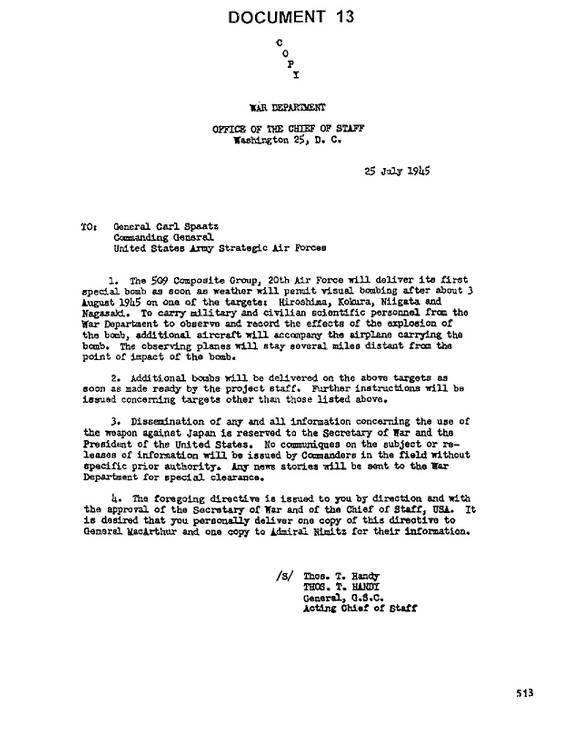
Related products
-

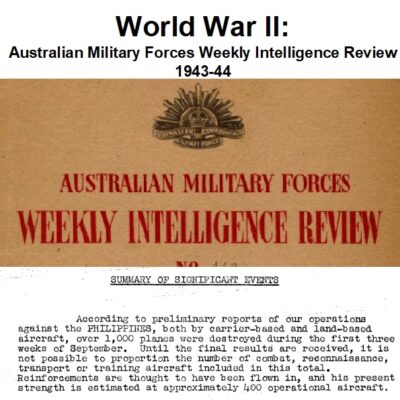
World War II: Australian Military Weekly Intelligence Reports 1943-44
$3.94 Add to Cart -
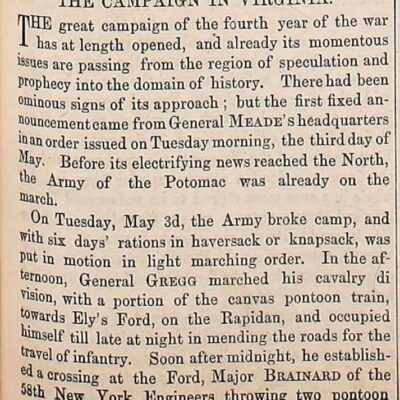
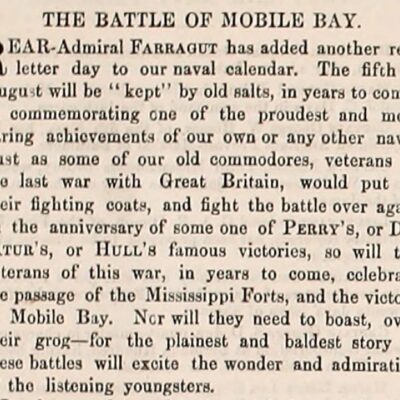
Civil War: Army Navy Journal & Gazette Volume 1 (1863 – 1864)
$19.50 Add to Cart -
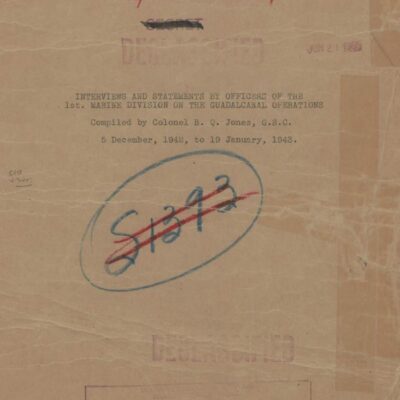
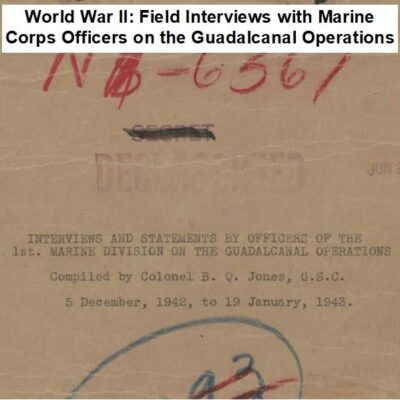
World War II: Marine Corps Officer Interviews on Guadalcanal Operations
$3.94 Add to Cart -
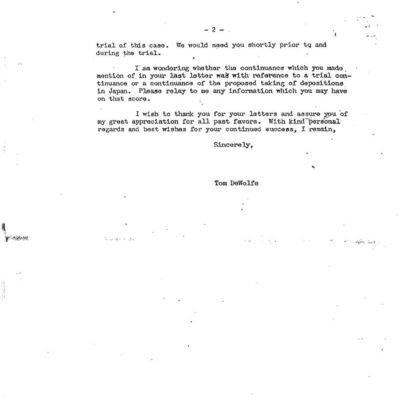
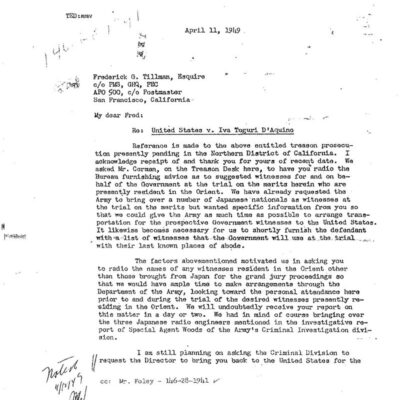
Tokyo Rose: Department of Justice Prosecution Files
$19.50 Add to Cart